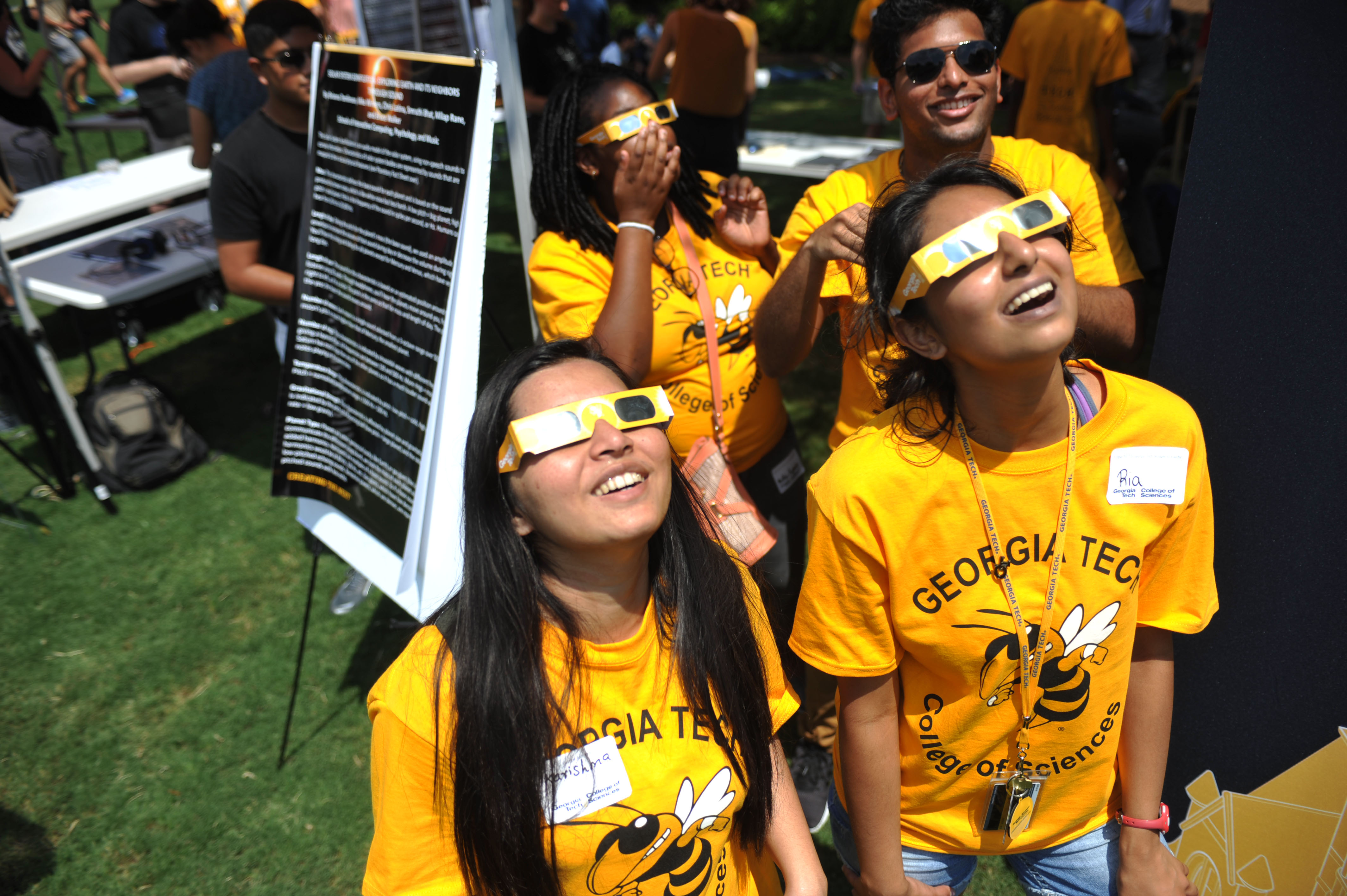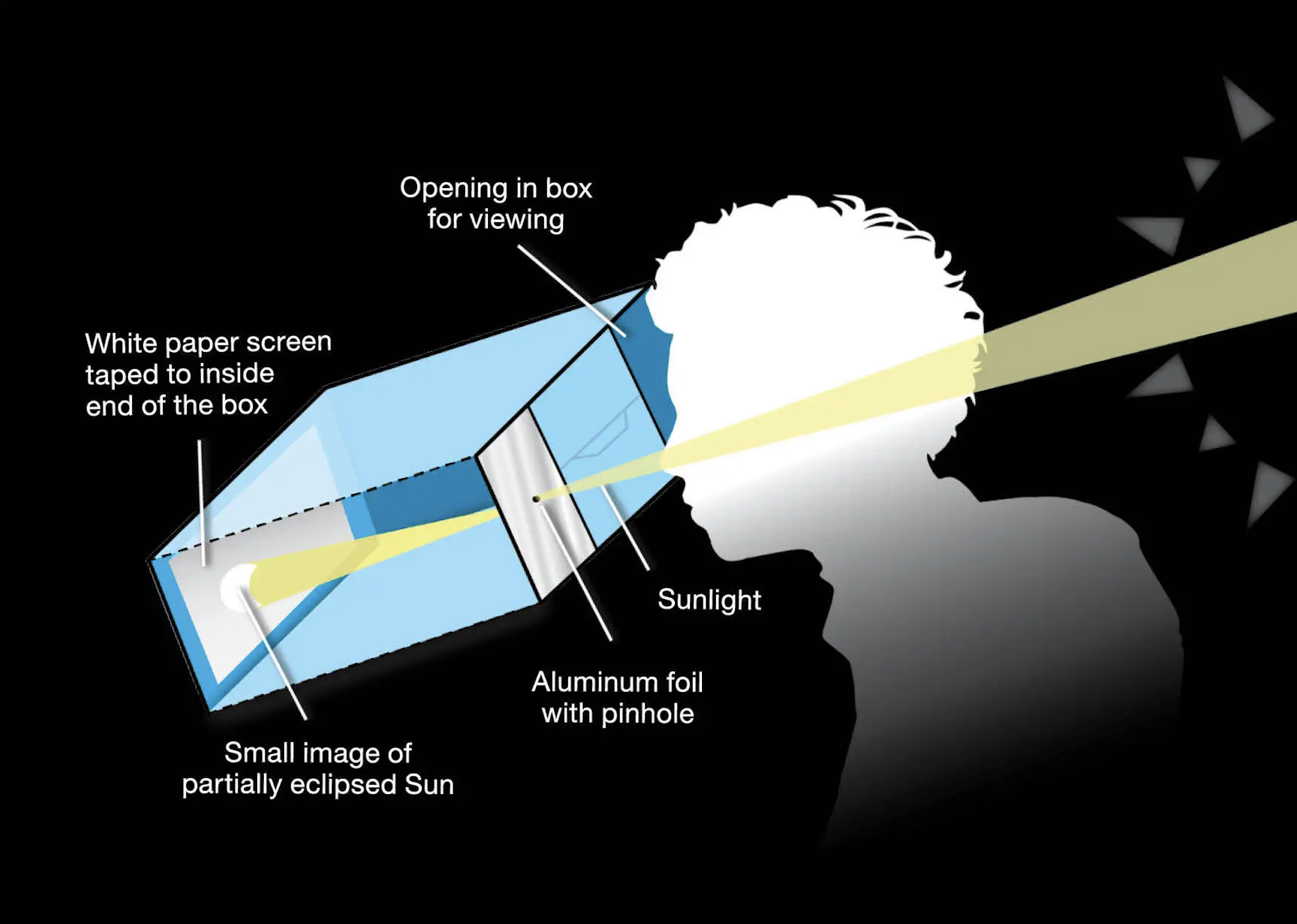On Monday, April 8, North America will experience the astronomical phenomenon known as a total solar eclipse when the moon passes between the sun and the Earth.
The path of totality will shadow portions of Mexico before it passes over 15 U.S. states and parts of Canada. While Atlanta does not fall directly in the path as it did in 2017, nearly 85% of the sun will be blocked, giving the Georgia Tech community a chance to participate in the historic event.
"Quite frankly, there's not much difference between 85% and 95%. You can still witness the eclipse, and seeing that the sun is a crescent is a sight you'll never forget," said Jim Sowell, a principal academic professional in the School of Physics and the director of the Georgia Tech Observatory.
Safety First
Although a portion of the sun will be blocked, looking directly into the sun remains harmful to the eye. Sowell offers several tips to protect yourself.
Safety glasses: Traditional sunglasses do not provide protection for extended solar viewings. Eclipse-safe glasses will be labeled 'ISO 12312-2,' indicating that they have been certified by the International Organization for Standardization. Because the eclipse will last for two hours, glasses can be shared throughout the event.
Pinhole camera: Using a cardboard box, such as a shoebox, Sowell recommends creating a homemade pinhole camera (See image at the bottom of the page), which projects the sun inside the box's walls.
Sowell noted that a colander, or the sun shining through tree leaves, can also be used to project the sun's image onto the ground.
Telescope: Telescopes are a great way to view the eclipse as long as an ISO 12312-2 filter is placed on the lens. A cellphone camera is not a replacement for a filtered lens, as the sun's rays can damage your device.
Where to Watch
Weather permitting, viewers will be able to see the eclipse in an urban or rural environment.
Sun seekers in the city should avoid tall buildings and other obstructions to allow for the best view. In Atlanta, the eclipse is expected to be visible starting at 1:45 p.m., with peak coverage at 3:04 p.m. It will end at 4:21 p.m.
Sowell says that a rural setting is ideal for witnessing the true power of an eclipse, especially within the path of totality.
"Birds may begin to recognize that it's getting darker and start to roost. Cattle may start to low, and you'll notice a temperature drop because of the cool air trapped in the shadow as it moves across the Earth. And if you're in totality, you might see some planets and some bright stars that come out due to the dark sky," said Sowell, who will be traveling to Dallas, Texas, for the eclipse.
Witnessing History
Total solar eclipses typically occur every one to three years, but Sowell noted that the continental U.S. will not see another until 2044. A professional astronomer for 40 years, Sowell is preparing to see his second total eclipse and hopes this event will inspire others to look at the sky (safely) with the same curiosity he does.
"I hope others view the eclipse and understand that there is astronomy that can be done with just the naked eye, and then there is so much more. If we can get people interested with just the sun and the moon, they'll realize they can go to the edge of the universe," he said.
He adds that, unlike other widely popular events, everyone taking part in the eclipse is a winner.
"Unless you're clouded out, this is better than the Super Bowl because half the people are upset about the result, whereas for this kind of eclipse, if you see it, you're excited and will remember it for the rest of your life."
Sowell also urges viewers to be patient if the weather isn't ideal.
"Just because it's cloudy in the morning or 10 minutes before the event, don't punt," he said. "You need to ride it out. And you might get lucky. Even if it's only during the second half that it clears up, it'll still be just as memorable."
Two groups of students will be traveling to experience totality, including 55 graduate and undergraduate students from the School of Physics, led by Associate Professor Dragomir Davidovic, and another trip led by the Georgia Tech Astronomy Club.
For More Information Contact
Steven Gagliano - Institute Communications




